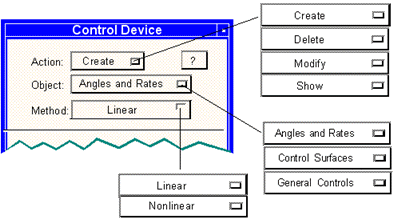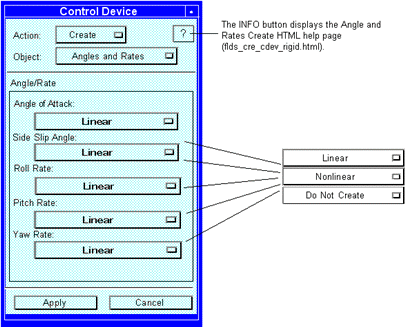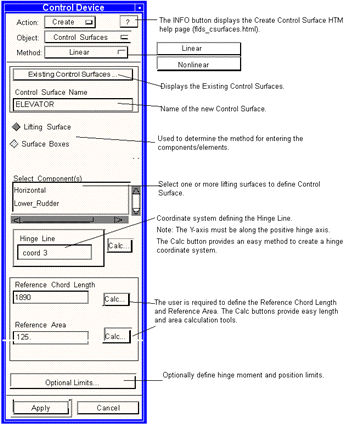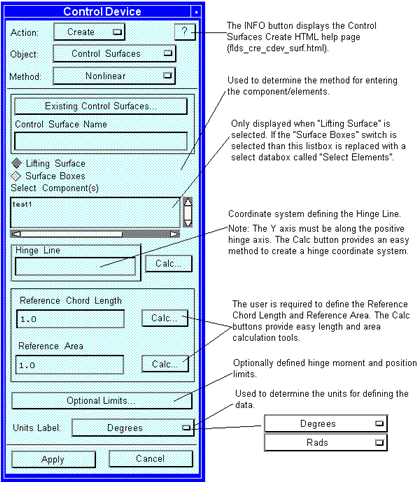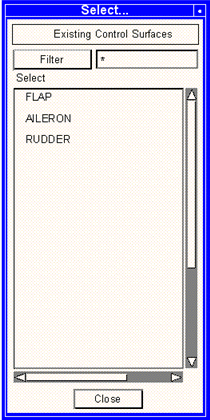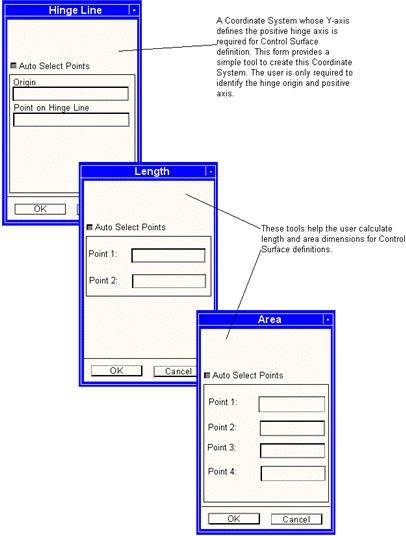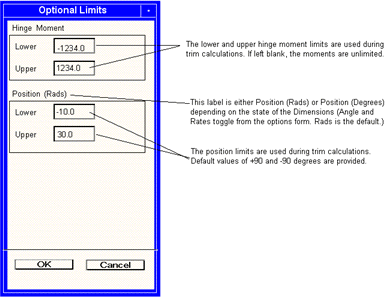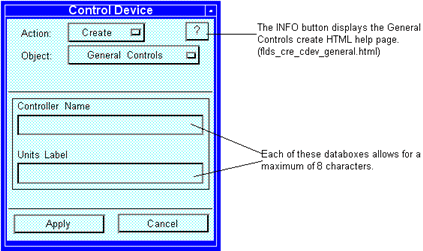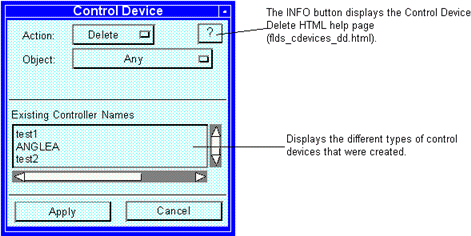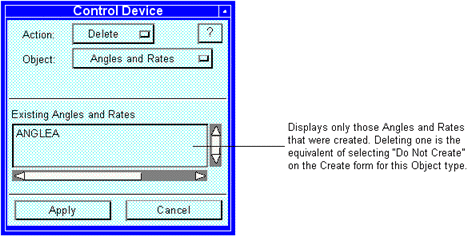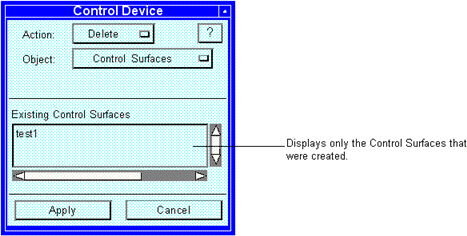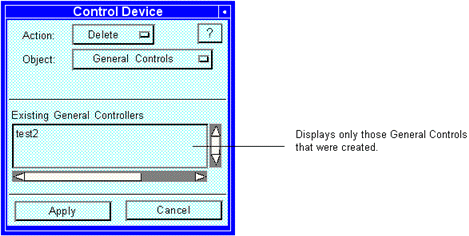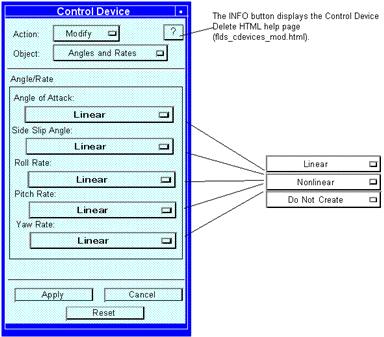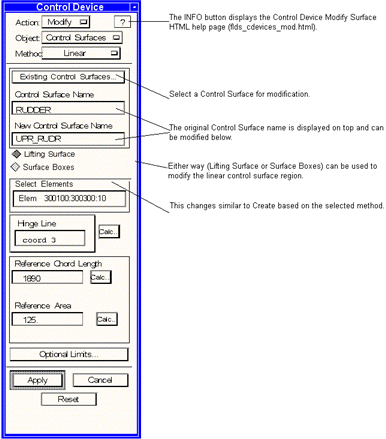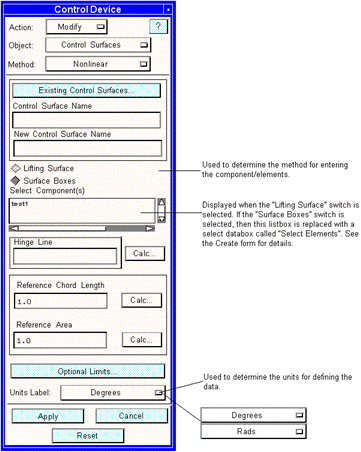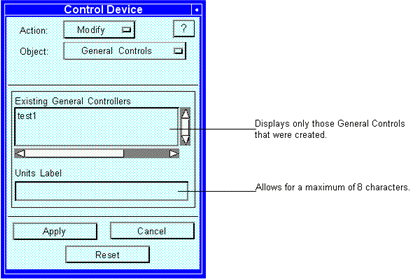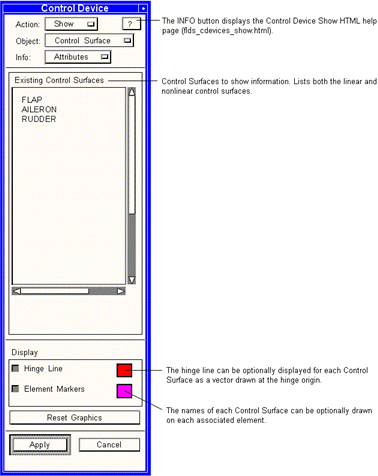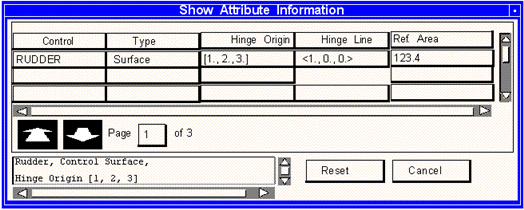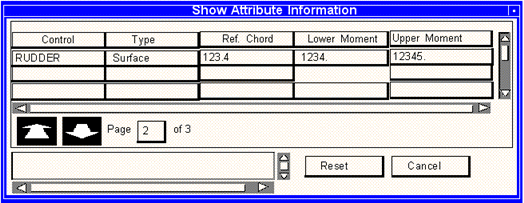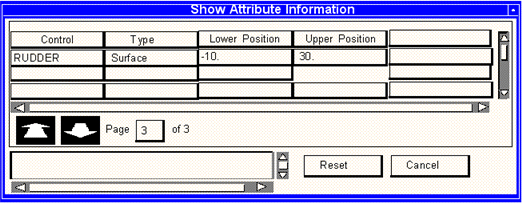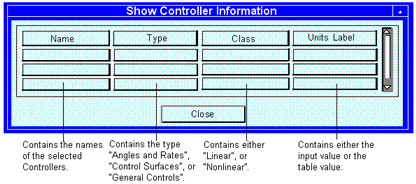XXXXXXXXXXXXXXXXXXXXXXXXXXXXXXXXXXXXXXXXXXXXXXXXXXXXXXXXXXXXXXXXXXXXXXXXXXXXXXXXXXXXXXXXXXXXXXXXXXXXXXXXXXXXXXXXXXXXXXXXXXXXXXXXXXXXXXXXXXXXXXXXXXXXXXXX''"> Control Device
Control devices are those components of an air vehicle that can be directly deflected to affect the trajectory of the vehicle. Examples include elevators, rudders, spoilers, and flaps. All of these are aerodynamic control surfaces. However, “Control Device” encompass a second set of parameters that have a more general definition: any parameter whose perturbation causes a change in an applied load. Examples from the more general set are the angle-of-attack and vertical acceleration. Typically these values result from pilot inputs to “control surfaces”, but in the simulation we have access to these “control device” to simulate prescribed quasi-static maneuvers. Both kinds of devices are defined through this interface.
Overview
When the user selects Control Device, the first form that displays is Create/Angles and Rates. Shown adjacent to this form are ALL the different Actions, Objects, and Methods that can appear as part of the Control Device option:
Most of the Control Device forms are shown and annotated in the following pages, grouped by action as follows:
• Create
• Delete
• Modify
• Show
Definitions for Control Device Objects and Methods
Control Surface is an aerodynamic surface that is made up of some portion of one or more lifting surfaces.
Surface Boxes are elements of the lifting surfaces that were created in the Flat Plate Aero Modeling option.
Control Devices
Following is a list of the Flat Plate Aero Modeling forms and subforms related to Control Devices:
• Create/Angles and Rates
• Create/Control Surfaces/Linear
• Create/Control Surfaces/Nonlinear
• Create/Control Surfaces subforms
• Existing Control Surfaces
• Hinge Line, Reference Chord Length, and Reference Area
• Optional Limits
• Create/General Controls
• Delete/Any
• Delete/Angles and Rates
• Delete/Control Surfaces
• Delete/General Controls
• Modify/Angles and Rates
• Modify/Control Surfaces/Linear
• Modify/Control Surfaces/Nonlinear
• Modify/General Controls
• Show/Control Surfaces/Attributes
• Show Attribute Information
• Show/Any Controllers
• Show Controller Information
Control Device Forms
Create/Angle and Rates
An Angle and Rate is defined by setting it to Linear or Nonlinear. If the user does not want to create a particular angle and rate, then that option menu should be set to Do Not Create.
Create/Control Surfaces/Linear
A Linear Control Surface can be defined by selecting all elements associated with one or more lifting surfaces. The user is also asked to provide a hinge line coordinate system (Y-axis must be along positive hinge axis), a Reference Chord Length and a Reference Area. The reference values are only used in the calculation of non-dimensional hinge moment coefficients and do not affect any other trim or loads calculations.
Linear Control Surfaces can also be defined using a set of selected elements which are not required to be connected. This form is similar to the one on the previous page and only those things that are different for element selection are described below.
Create/Control Surfaces /Nonlinear
Nonlinear Control Surfaces are defined similar to the Linear Control Surfaces except that a Units Label must also be defined.
Create/Control Surfaces Subforms
Existing Control Surfaces
This form simply lists all the Existing Control Surfaces. Selection of a surface does not result in any information being transferred back to the Create/Control Surfaces form.
Hinge Line, Reference Chord Length, and Reference Area
Limits: Hinge Moment and Position
The Optional Limits subform allows the user to provide Control Surface Hinge Moment and Position limits. These limits are used to check for saturation of the Control Surface during an aeroelastic trim calculation.
Create/General Controls
A General Control is defined by specifying a Controller Name and by entering the Units Label.
Delete/Any
This form allows the user to delete any Control Device from the database.
Delete/Angles and Rates
This form allows the user to delete Angles and Rates from the database.
Delete/Control Surfaces
This form allows the user to delete linear and nonlinear control surfaces from the database.
Delete/General Controls
This form allows the user to delete general controls from the database.
Modify/Angles and Rates
Users can modify existing Angles and Rates by setting them to be Linear, Nonlinear, or Do Not Create.
Modify/Control Surfaces/Linear
Users can modify existing linear control surfaces. The Linear Control Surface element region can be redefined by selecting one or more existing Lifting Surfaces or selecting individual elements.
Modify/Control Surfaces/Nonlinear
Users can modify existing nonlinear control surfaces the same way they modified linear control surfaces.
Modify/General Controls
Users can modify the units label assigned to existing General Controls.
Show/Control Surfaces/Attributes
This form allows the user to show attribute information about the existing Control Surface (linear and nonlinear). Select Apply to display the Show Attribute Information subforms as shown on the following page.
Show Attribute Information
Three tables of attribute information appear for the selected Control Surface(s). Selecting any cell in the spreadsheet displays Control Surface information in the databox.
Show/Any Controllers
This form allows users to show Controller Information about the existing control devices. Select Apply to display the Show Controllers Info subform as shown on the following page.
Show/Any Controllers/Show Controller Info
This spreadsheet shows the name, type, class, and unit label for all the selected control devices.
